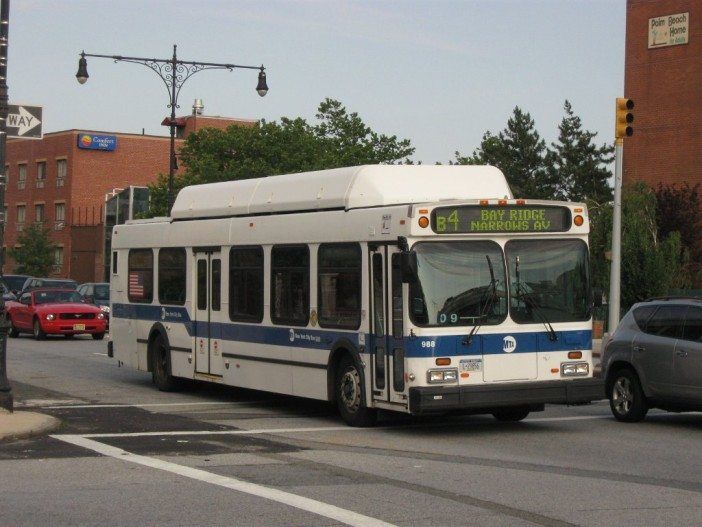The Commute: How Successful Are The MTA’s New Bus Routes? Part 1 Of 2


THE COMMUTE: Last week, we used 2014 ridership data to determine how well the MTA’s Select Bus Service (SBS) routes were performing compared to local and limited routes. We determined that only two of the seven routes performed better than the borough averages. In the past several years, the MTA created new routes or reinstituted ones that were discontinued in 2010. Using the weekday average ridership for 2014 we can learn about the performance of these new routes. But first a little background information.
Many think that the MTA’s goal is to improve bus service and access between neighborhoods. Far from it. The MTA starts off with the premise that bus service can never be profitable. They would rather the dollar vans, cabs, and services such as Uber, operate all surface transportation. Of course that would never happen.
The MTA loses X amount of dollars for each passenger riding buses. Therefore, from a business perspective, the only sensible goal is to minimize your losses. You do that by operating as little service as you are able to. If you operate X amount of service you lose Y dollars. Therefore, if you operate X minus Z service, you will lose Y dollars minus the amount it costs to provide Z service. By providing less service, your bottom line improves.
That was the impetus for the disastrous 2010 service cutbacks. I was one of the very few to predict the doom and gloom that resulted. Those cutbacks were so harmful and there was so much outcry that the MTA was forced to make a few service restorations. If you recall prior to June 2010, the media focused entirely on the proposal to eliminate student half fares, not on the service reductions that only became news after they occurred. The MTA knew that by proposing an unprecedented number of service cuts as well as a serious fare change, the public would not be able to focus on everything, and most of the service cuts would become reality.
However, in a constantly changing city you can’t just cut service all the time without exposing your true motives. So to give the illusion the MTA wants to be responsive to changing needs, they established a few token bus route “shuttles” as well as a few route extensions without even fully integrating them into existing services. So how well are these performing?
At 30-minute intervals even during rush hours, one shouldn’t expect too much. We checked average weekday passengers in order to determine the average number of passengers per bus. Keep in mind that this does not tell us about bus crowding since not everyone is on the bus at once. There could be peak directional travel, and few travel by bus at night. It also is not an indicator of efficiency that would have to figure in other factors like pay hours. A comparison between routes, however, does shed some light on a route’s performance. We do the best we can with the information the MTA provides.
Let’s first examine the average passengers per bus on the routes the MTA discontinued in 2010. The B51 carried an average 3.38 passengers per bus trip in 2009, the last full year of operation; similarly, the number for the B71 was 15.46; B23 – 16.6; M6 – 30.69; M18 – 14.44; M30 – 26.44. Bx14 – 26.00; Q14 – 18.43; Q74 – 17.48; Q75 – 13.04. Q79 – 10.28; S60 – 2.45. (Old bus schedules for the B37, B39, M27 and S67 were not available and therefore those numbers were not included, nor were bus routes operated by the MTA Bus Company.
If we average those average numbers we get 17.06. Remember that. It would be logical to assume that the new routes would obtain a higher average number of riders per bus than the discontinued routes to be considered successful. Correct?
The Commute is a weekly feature highlighting news and information about the city’s mass transit system and transportation infrastructure. It is written by Allan Rosen, a Manhattan Beach resident and former Director of MTA/NYC Transit Bus Planning (1981).
Disclaimer: The above is an opinion column and may not represent the thoughts or position of Sheepshead Bites. Based upon their expertise in their respective fields, our columnists are responsible for fact-checking their own work. Their submissions are edited only for length, grammar and clarity. If you would like to submit an opinion piece or become a regularly featured contributor, please e-mail nberke [at] sheepsheadbites [dot] com.




